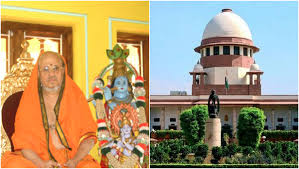Ram Singh vs. State of Uttar Pradesh [February 21, 2024]
Ram Singh was prosecuted for murder and attempted murder following an incident in which he allegedly fired at PW-1 (the informant), but the bullet missed and instead fatally wounded another individual. The prosecution relied on eyewitness testimonies and circumstantial evidence. The Trial Court convicted Ram Singh under Sections 301/302 (murder) and 307 (attempted murder) of the Indian Penal Code (IPC), sentencing him to life imprisonment and five years’ rigorous imprisonment, respectively. The co-accused, Lala Ram, was acquitted for lack of evidence.
Trial and Appeals
The conviction was based on the testimonies of PW-1 and neighbors, Lala Ram and Man Singh.
Ram Singh appealed, arguing that the evidence was insufficient and riddled with inconsistencies.
The High Court upheld the conviction and sentence.
Supreme Court’s Analysis
The Supreme Court scrutinized the reliability of the prosecution’s evidence. It observed glaring inconsistencies in the eyewitness accounts, particularly noting that Lala Ram, present at the scene, did not see a pistol in Ram Singh’s hands.
The Court noted the absence of crucial forensic evidence: the weapon used in the crime was not recovered, and no ballistic expert was examined. While the Court clarified that non-recovery of the weapon or lack of ballistic evidence is not always fatal to the prosecution if credible direct evidence exists, in this case, such evidence was lacking.
The chemical examiner’s report on the deceased’s blood-stained clothes was not received, further weakening the prosecution’s case.
The Court emphasized that the benefit of doubt had been given to the co-accused Lala Ram based on the same evidence, and it was inconsistent to convict Ram Singh on that basis.
Judgment
The Supreme Court acquitted Ram Singh, setting aside both the Trial Court’s conviction and the High Court’s affirmation.
The Court held that the prosecution had failed to establish guilt beyond a reasonable doubt due to unreliable eyewitness testimony and the absence of corroborative forensic evidence.
The Court reiterated that suspicion, however strong, cannot replace proof, and the accused is entitled to the benefit of doubt when the prosecution’s case is not established with credible, consistent evidence.
Significance
The judgment reinforces the principle that conviction in criminal cases must rest on consistent, reliable evidence and that the benefit of doubt must go to the accused in the face of material discrepancies.
It also highlights that non-recovery of weapons or lack of forensic evidence is not always fatal, but becomes critical when eyewitness testimony is unreliable.
Citation:
Ram Singh vs. State of Uttar Pradesh, Supreme Court, Criminal Appeal No. 206 of 2024, Judgment dated 21-02-2024.






























0 comments